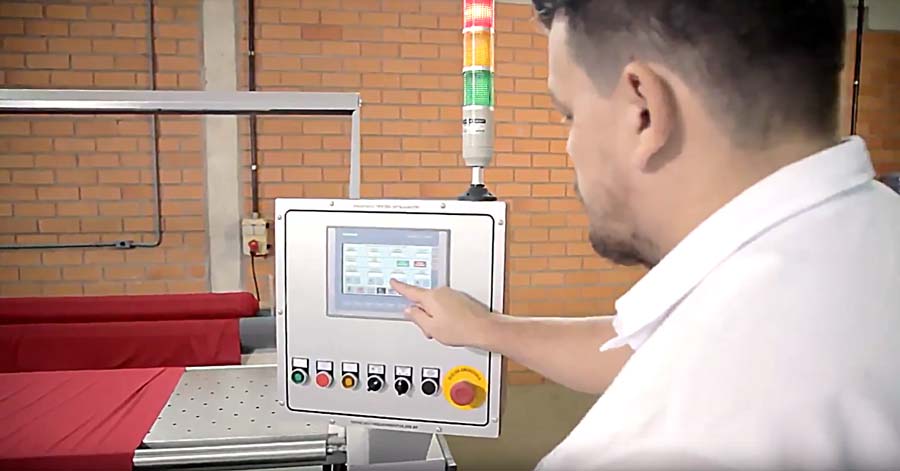Maintaining a competitive, efficient and profitable business is a challenge for any company. In the textile segment, in addition to challenges arising from the macro environment, there are also those specific to managing a clothing factory.
In this article, check out the main challenges in this market and see tips on how to deal with them. Follow along.
1. Achieving planned productivity rates in a garment factory
Naturally, in a scenario of instability and hypercompetition, it is necessary, more than ever, to achieve good productivity in the management of a clothing factory.
When these rates fall short of expectations, the company is generally using outdated machinery, which is often stopped or undergoing maintenance, or which does not produce as quickly as new machinery.

However, it is important to highlight that new machinery can also negatively impact productivity when it is not well suited to the company’s production process.
2. Have stock and quality control of inputs
This is a major obstacle in managing a clothing factory, as in a business in which its productivity and quality depend heavily on its inputs, it becomes an operational bottleneck that can cause major problems.’
If you don’t know exactly what you have or it’s out of stock. It is impossible to guarantee compliance with your production calendar, and many work stoppages can occur due to the lack of a specific input. The opposite can also occur, and is equally undesirable: duplicate orders of materials are made, generating waste and loss of profitability.
In this context, it is also not enough to just receive and register inputs in stock: you need to check their quality. A damaged fabric can delay your entire production or, if used anyway, generate dissatisfaction and loss of customers and credibility in the market.
Ultimately, this lack of control will not allow the company to:
- Know what the factory’s production capacity is with the inputs it has in stock.
- Calculate the average yield (number of pieces) of each of the suppliers in recent months (for example, how many pieces did a roll of fabric produce?).
- Identify whether the quality level of fabrics has improved or worsened in recent orders.
- Distinguish which suppliers offer the best quality in fabrics and those that present the most problems.
- Understand which fabric colors cause problems and identify which suppliers these shades belong to.
+Have you read these?
- How to improve the productivity of a clothing factory?
- Production management: what are the stages of your process like?
- Advanced manufacturing: what it is and who is already using it
3. Reduce costs and production time when managing a clothing factory
In order to optimize the management of a clothing factory, there is the challenge of also optimizing two of the main resources in the production scope: budget and time.

The increase in productivity and the improvement in finances and business results occur through the reduction of costs across its entire chain, as well as the production time of each order – naturally, without impacting the quality of deliveries.
4. Join Industry 4.0
Industry 4.0 is an increasingly tangible reality nationally and internationally. However, the use of digital technologies in our industry is still not widespread. According to a survey by the CNI (National Confederation of Industry), of all Brazilian industries, 58% know the importance of these technologies for business competitiveness, however, less than half use them.
Therefore, joining Industry 4.0 is one of the main current challenges of managing a clothing factory that wants to remain competitive, efficient and updated, exploring new business models.
5. Correct problems arising from previous stages of the production process
As we have seen, many clothing factories have not yet embraced digitalization. This is one of the causes of the difficulty encountered in correcting problems and failures arising from previous phases of the production process. The integration of the production chain is essential to deal with this challenge and develop a more optimized and efficient process.
+Have you read these?
- What is quality control? How does it work in the textile industry?
- Circular Economy: How Does It Apply to the Textile Sector?
- The future of the Textile Industry in Era 4.0: with Robson Wanka
6. Have more sustainable production
The end customer increasingly demands sustainable consumption solutions – in fact, a searchindicated that Brazilians occupy third place in the ranking of people with greater awareness and concern about sustainability.

In this context, it is a challenge to manage a clothing factory to restructure processes and create solutions to make its production chain more sustainable. Such initiatives may involve intelligent use and treatment of water, reducing electricity consumption. For carrying out waste disposal in an environmentally and socially correct manner, among other actions.
7. Control the rates of second quality parts in production
Second quality and non-conforming pieces, especially those produced from defective fabrics, constitute significant bottlenecks in clothing factories.
To avoid them, it is important to always demand and check the technical data sheet of your suppliers’ fabrics. In addition to checking the materials at the time of delivery. In order not to have major problems with exchange policies and cause delays in production.
And how does your company deal with these challenges of managing a clothing factory? Do you have any other management difficulties that we haven’t covered here? Leave your message in the comments and follow the Delta Equipamentos content channel for more tips on the textile market!



![E-book]How to ensure quality control in the textile industry?](https://deltamaquinastexteis.com.br/wp-content/uploads/2019/04/ebook-como-garantir-o-controle-de-qualidade-na-industria-textil-1.jpg)
